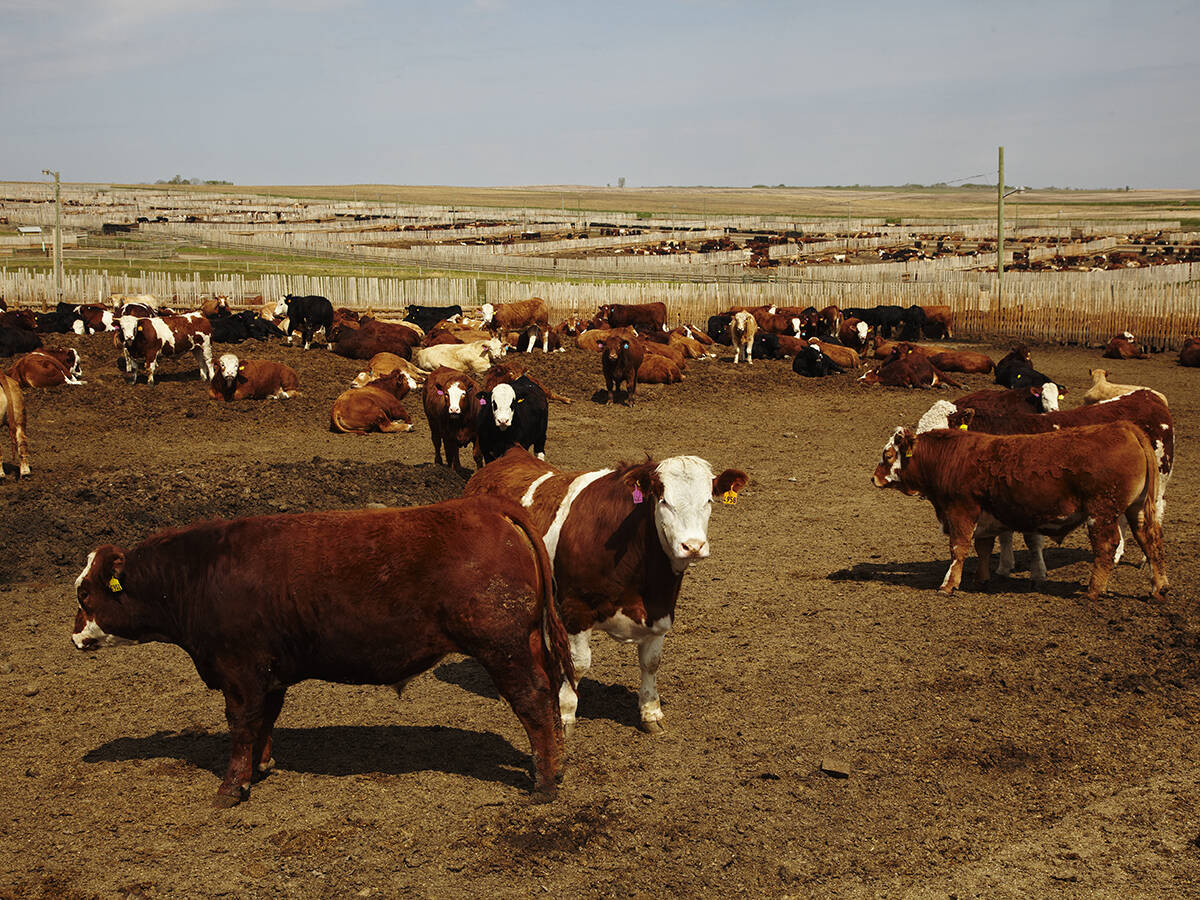Fed prices retreat
Fed prices pulled back from the previous week’s record high.
Fed steers averaged $120.93 per hundredweight, down $1.77, and heifers averaged $119.70, down 86 cents.
Dressed trade was $3-$4 per cwt. lower.
Recent strong fed prices have caused feedlots to sell cattle early, and there are more reports of lower yields and grades.
Carcass discounts saw a good portion of the week’s greener calf offering trade live.
The firm Canadian dollar discouraged U.S. buyer interest.
Read Also

Canfax cattle market report – November 13, 2025
The Canfax cattle market report for November 13, 2025. Fed & feeder cattle prices, butcher cow trends, and cutout market insights.
The Alberta cash-to-futures basis widened slightly to -$1.76, but that is still considered strong.
Weekly sales volume rose 10 percent to 17,600 head, which was down nine percent from last year.
No Saskatchewan fed trade was reported.
Weekly western Canadian fed slaughter to June 8 fell four percent to 35,947 head.
Weekly exports to June 1 fell 21 percent to 6,833 head.
Market-ready supplies should be moderate for the next couple of weeks. Packer bids will increasingly reflect discounts for poor carcass quality.
Beef demand typically falls off once the summer heat kicks in, which could pressure cattle prices lower, even though feedlots are current in their marketing.
Cow prices fall
Western Canadian cow slaughter totalled 5,947 head, down five percent from the previous week but 43 percent larger than the same week last year.
Non-fed prices have been volatile, partly because of slowdowns at the JBS plant in Brooks, Alta.
D1, D2 cows ranged $68-$80 to average $74.67, down $3.33.
D3s ranged $60-$72 to average $66.50.
Butcher bulls were $84.83, down $2.48, a 15-week low.
With JBS not buying for a large part of the week, speculators stepped in to help keep a floor on the market.
Non-fed prices could struggle until plant issues at Brooks are resolved.
Feeders weaken
Feeder prices fell, but strength was noted by mid-week.
The 850 lb. steer basis remained weaker than the five-year average of -$15.63, but basis levels should strengthen seasonally.
The 850 pound basis was -$25.26 two weeks ago, which will likely stand as the weakest level of the year.
Alberta auction volumes totalled 15,583. It was the eighth straight week that auction volumes surpassed year ago levels.
Weekly exports to May 25 fell 23 percent to 3,017.
Old crop barley remains in tight supply, and feedlots are buying hand to mouth. New crop barley contracts are at a sharp discount to the spot market.
Bred cows sold at $950-$1,250 per head, and cow-calf pairs were $1,200-$1,800.
Beef slides
The U.S. Choice cutout to June 13 slid about $3 US to $200.63 on larger supplies, while Select fell 47 cents to $184.37.
Rainy weather in the eastern half of the United States is preventing cookouts and hurting beef demand.
Canadian cutout values to May 31 were AAA $196.96 Cdn, up about $4, and AA was $192.07, up 24 cents.
Prices for the week ending June 7 were unavailable.
Montreal wholesale prices were unavailable.
Cattle on feed
The Canfax June 1 Alberta-Saskatchewan cattle-on-feed report showed 817,333 cattle in feedlots, down three percent from last year at the same time.
That was down eight percent from the five-year average.
Placements for May were 116,816 head, up 14 percent.
That was the largest in three years but equal to the five-year average.
Heifers as a percentage of total placements were 43.6 percent versus 31.7 percent last year.
Marketings in May were 135,171 head, down 11 percent from last year and the lowest since the on feed report began in 2000.
Other disappearance was 49,606, up 45 percent.














